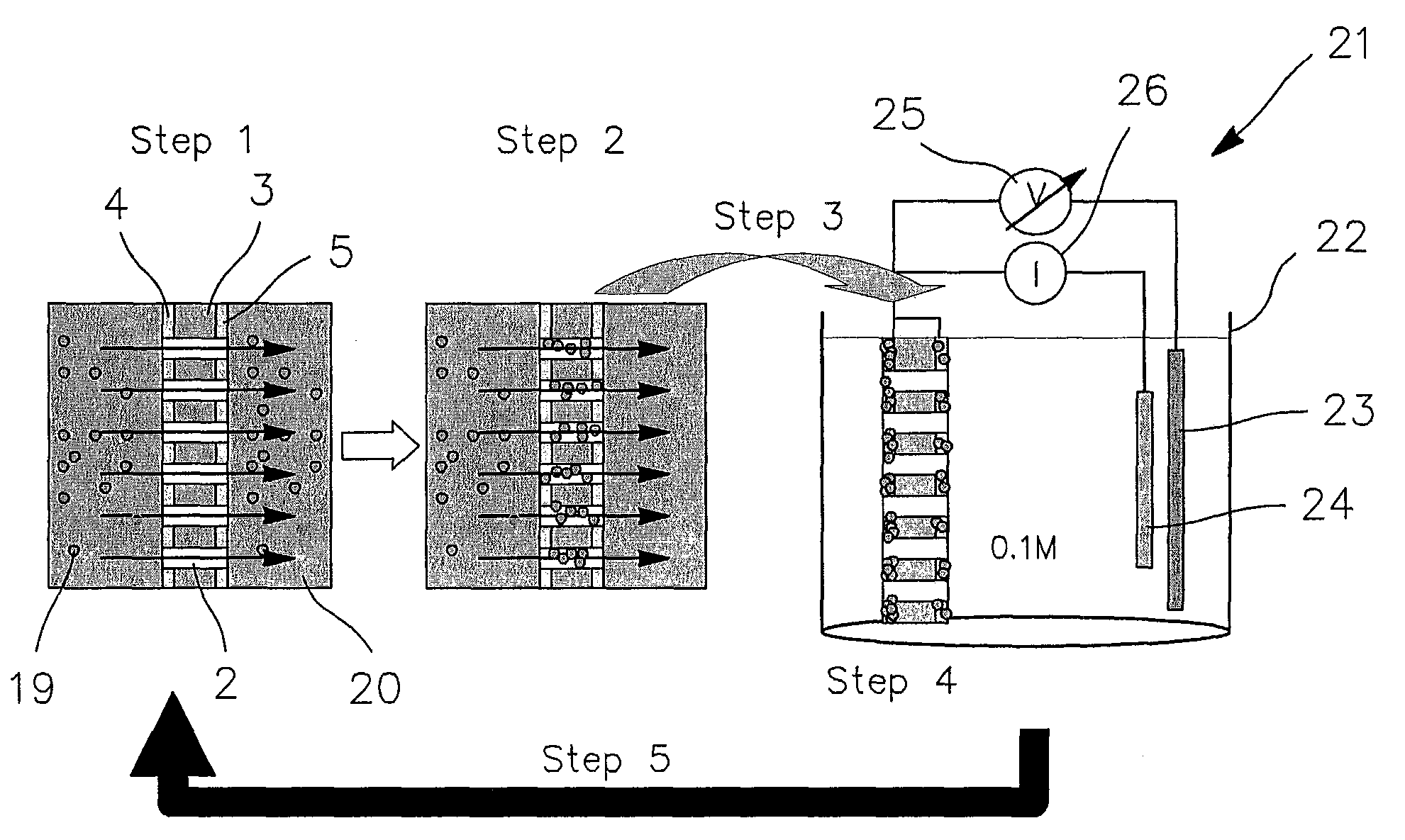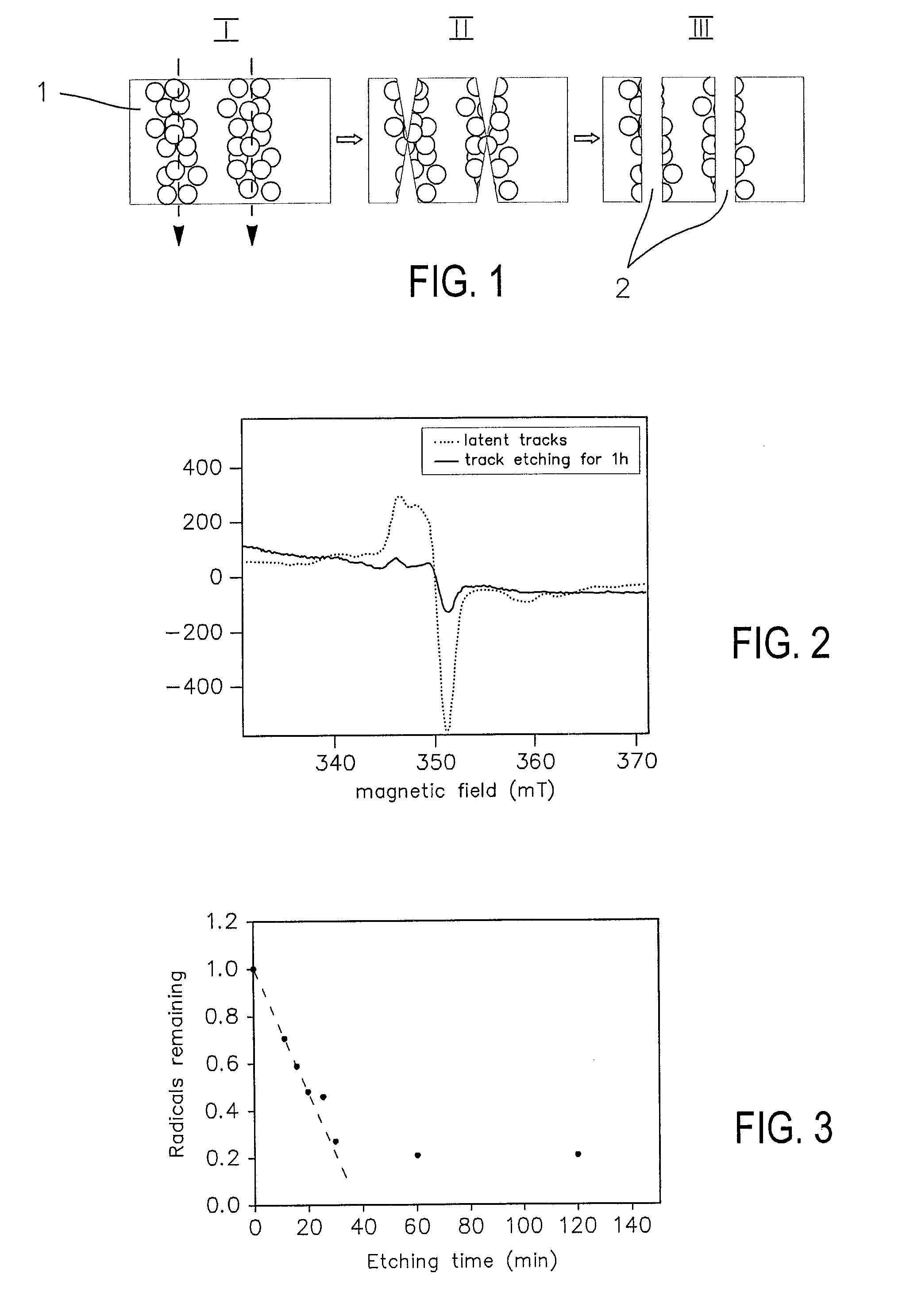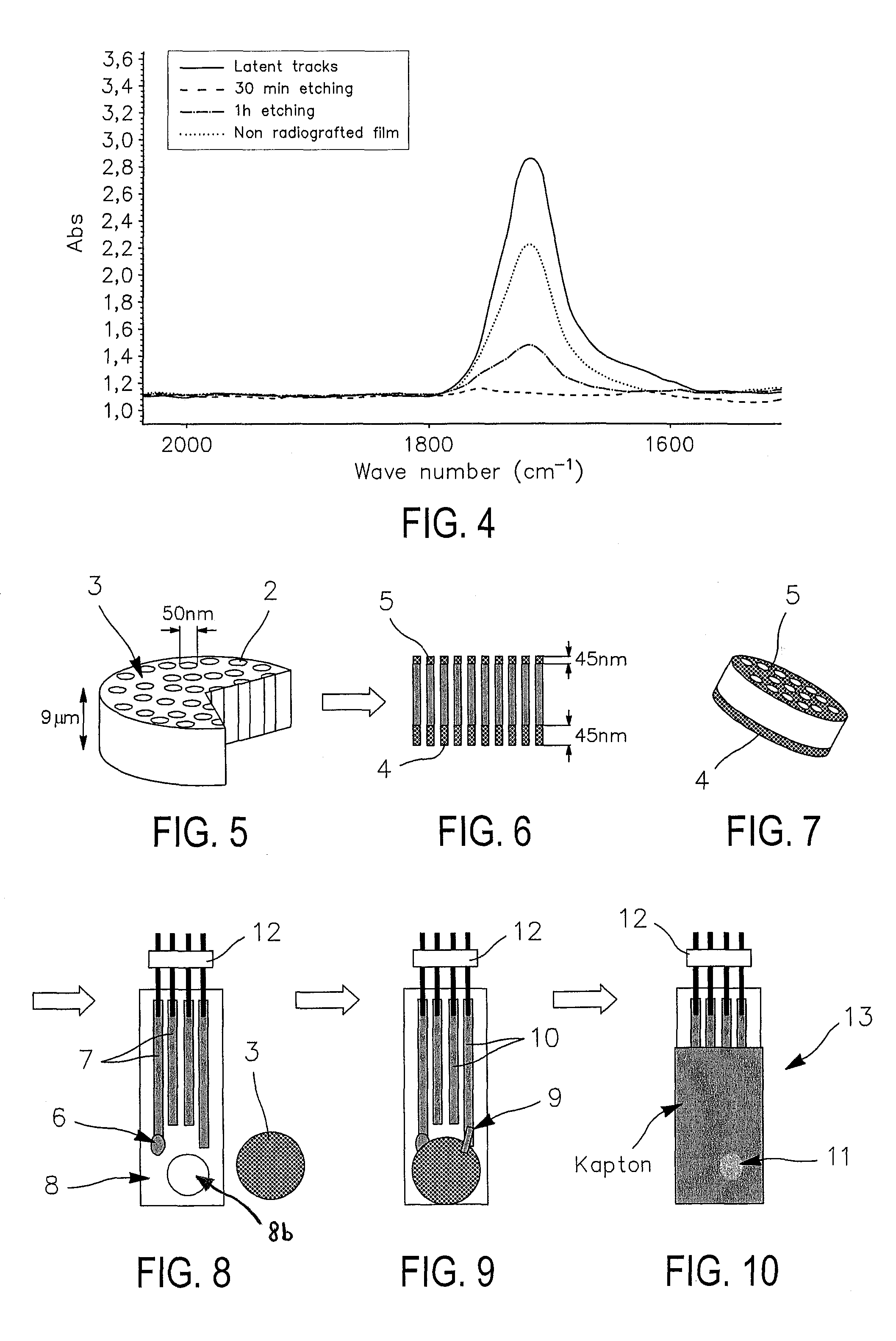Method and device using nanoporous membrane for detecting and quantifying heavy metal ions in a fluid by anodic stripping voltammetry
a technology of anodic stripping and voltammetry, applied in the field of nanosensors, can solve the problems of limiting application, high cost, and inability to generally consider landfill and landfill environmentally acceptable, and achieve the effects of reducing cost, reducing waste, and reducing labor intensity
- Summary
- Abstract
- Description
- Claims
- Application Information
AI Technical Summary
Benefits of technology
Problems solved by technology
Method used
Image
Examples
Embodiment Construction
[0042]While the invention is susceptible to various modifications and alternative forms, specific embodiments thereof are shown by way of example in the drawings and will herein be described in detail. It should be understood, however, that the drawings and detailed description thereto are not intended to limit the invention to the particular form disclosed, but on the contrary, the intention is to cover all modifications, equivalents, and alternatives falling within the spirit and scope of the present invention as defined by the appended claims.
[0043]In accordance with the preferred embodiment, the method and device according to the invention relates to the following materials and processes:
[0044]Materials:
[0045]Poly(vinylidenefluoride) (PVDF) films of 9 μm thickness provided by PiezoTech SA®, Saint Louis (France). Toluene, potassium hydroxide, potassium permanganate, potassium disulfite, acrylic acid (AA), Mohr's salt ((NH4)2Fe(SO4)2.6H2O), sulphuric acid, EDC(C8H17N3.HCl), phosph...
PUM
 Login to View More
Login to View More Abstract
Description
Claims
Application Information
 Login to View More
Login to View More - R&D
- Intellectual Property
- Life Sciences
- Materials
- Tech Scout
- Unparalleled Data Quality
- Higher Quality Content
- 60% Fewer Hallucinations
Browse by: Latest US Patents, China's latest patents, Technical Efficacy Thesaurus, Application Domain, Technology Topic, Popular Technical Reports.
© 2025 PatSnap. All rights reserved.Legal|Privacy policy|Modern Slavery Act Transparency Statement|Sitemap|About US| Contact US: help@patsnap.com



